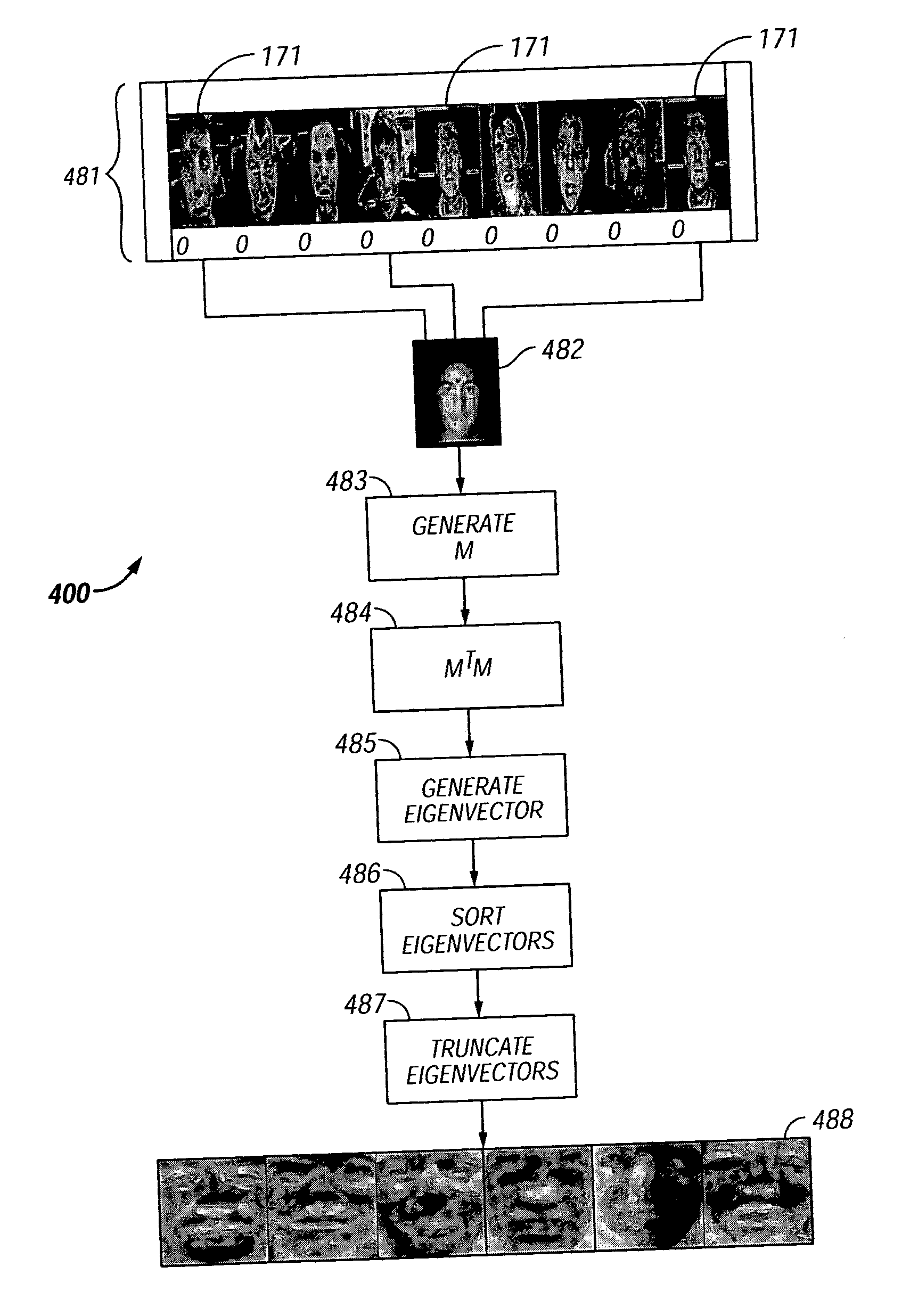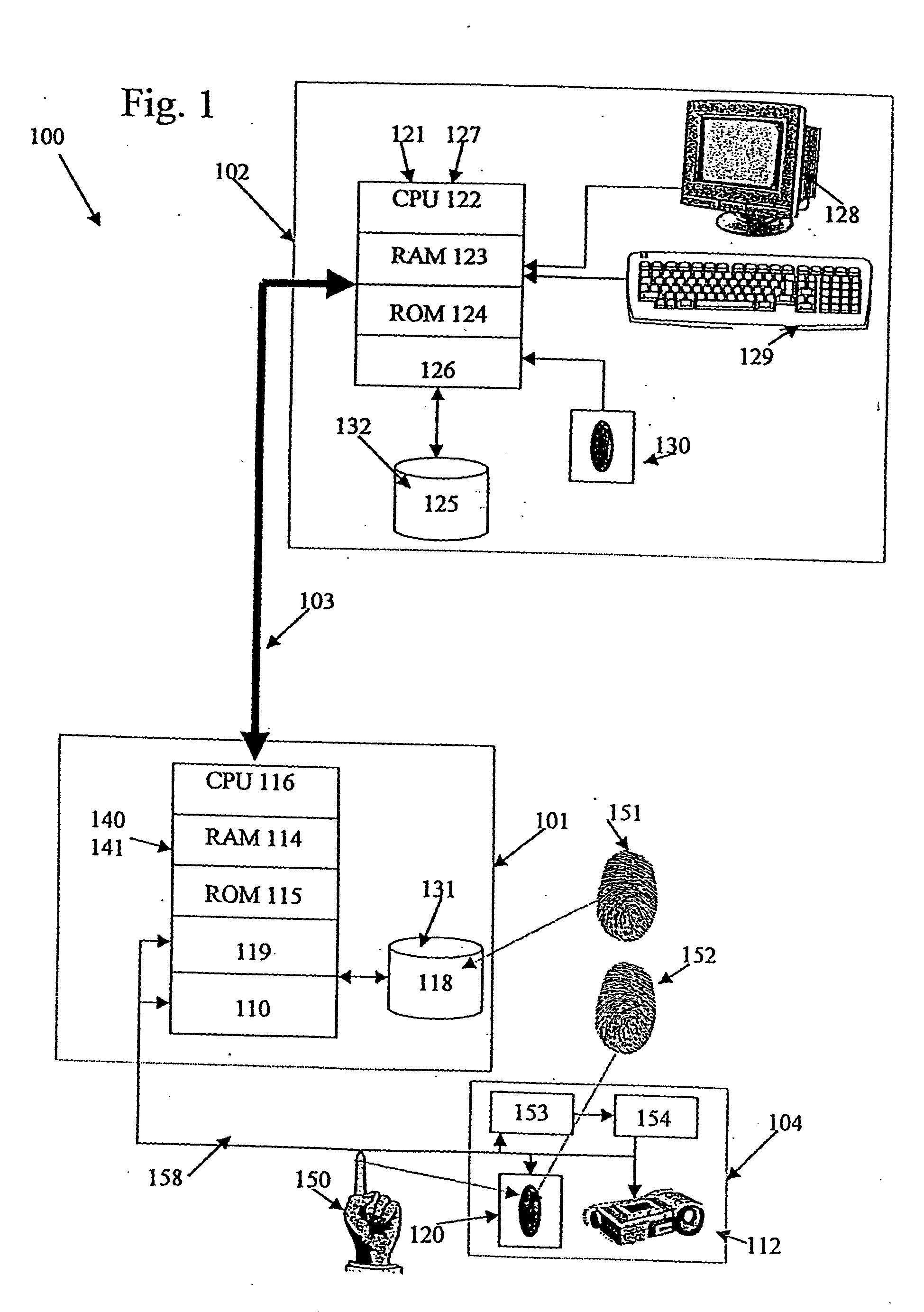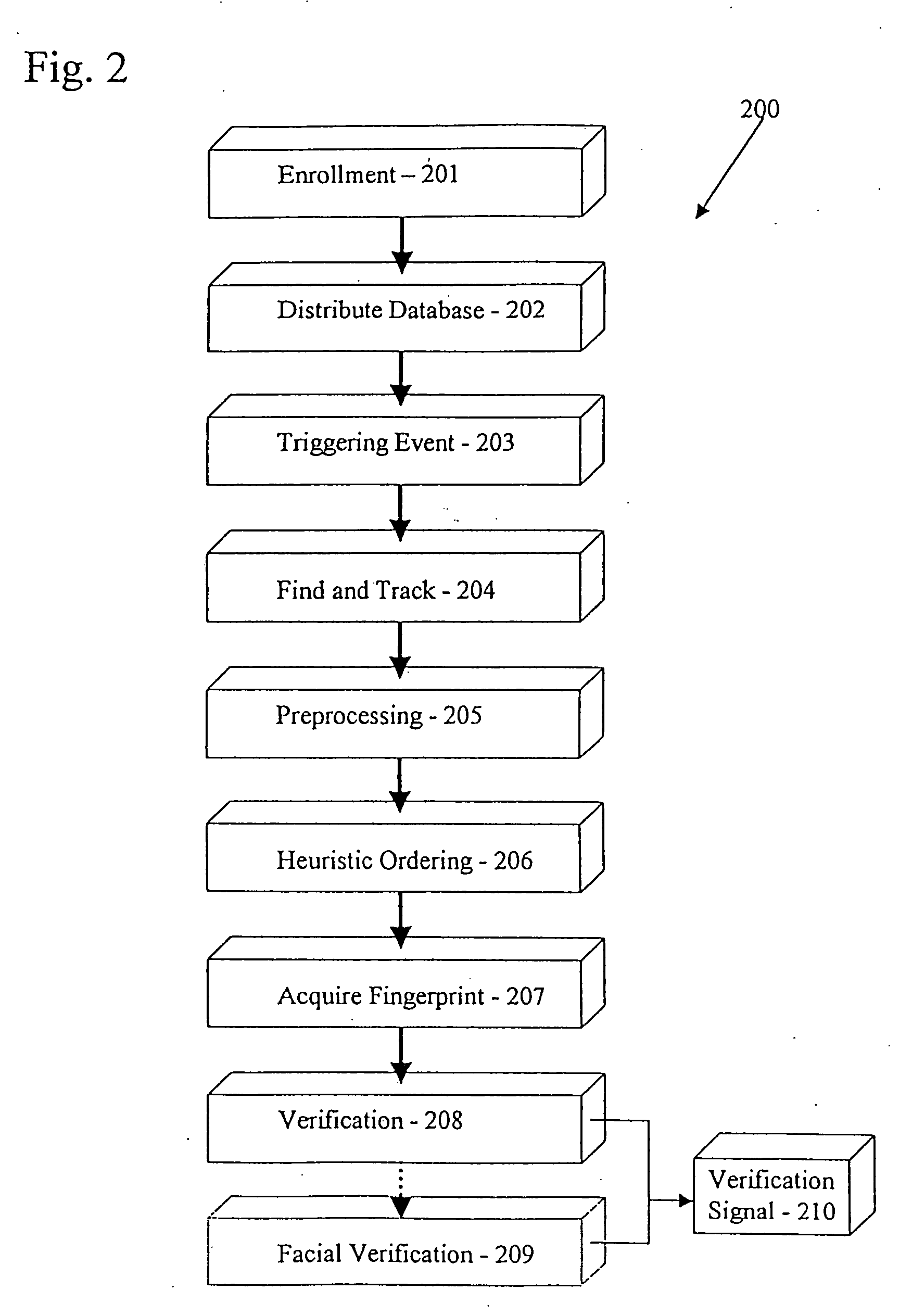Fingerprint verification system
a verification system and fingerprint technology, applied in the field of fingerprint verification system, can solve the problems of increasing the cost of biometric security, and increasing the cost of security for computer systems and facilities, so as to improve the apparatus and method of providing biometric security
- Summary
- Abstract
- Description
- Claims
- Application Information
AI Technical Summary
Benefits of technology
Problems solved by technology
Method used
Image
Examples
Embodiment Construction
[0024] Although those of ordinary skill in the art will readily recognize many alternative embodiments, especially in light of the illustrations provided herein, this detailed description is of the preferred embodiment of the present invention, an apparatus and method for providing fingerprint verification utilizing a facial image-based heuristic search paradigm, the scope of which is limited only by the claims appended hereto.
[0025] As particularly shown in FIG. 1, an apparatus for providing fingerprint verification of the present invention is referred to by the numeral 100 and generally comprises a client terminal with associated processing elements and interface electronics 101, an administrative control center and server 102, a communications network for communicating data between the local computer and administrative control center which can include a local area network (LAN) and the Internet 103, and biometric user interface which encloses a fingerprint sensor, and video came...
PUM
 Login to View More
Login to View More Abstract
Description
Claims
Application Information
 Login to View More
Login to View More - R&D
- Intellectual Property
- Life Sciences
- Materials
- Tech Scout
- Unparalleled Data Quality
- Higher Quality Content
- 60% Fewer Hallucinations
Browse by: Latest US Patents, China's latest patents, Technical Efficacy Thesaurus, Application Domain, Technology Topic, Popular Technical Reports.
© 2025 PatSnap. All rights reserved.Legal|Privacy policy|Modern Slavery Act Transparency Statement|Sitemap|About US| Contact US: help@patsnap.com



